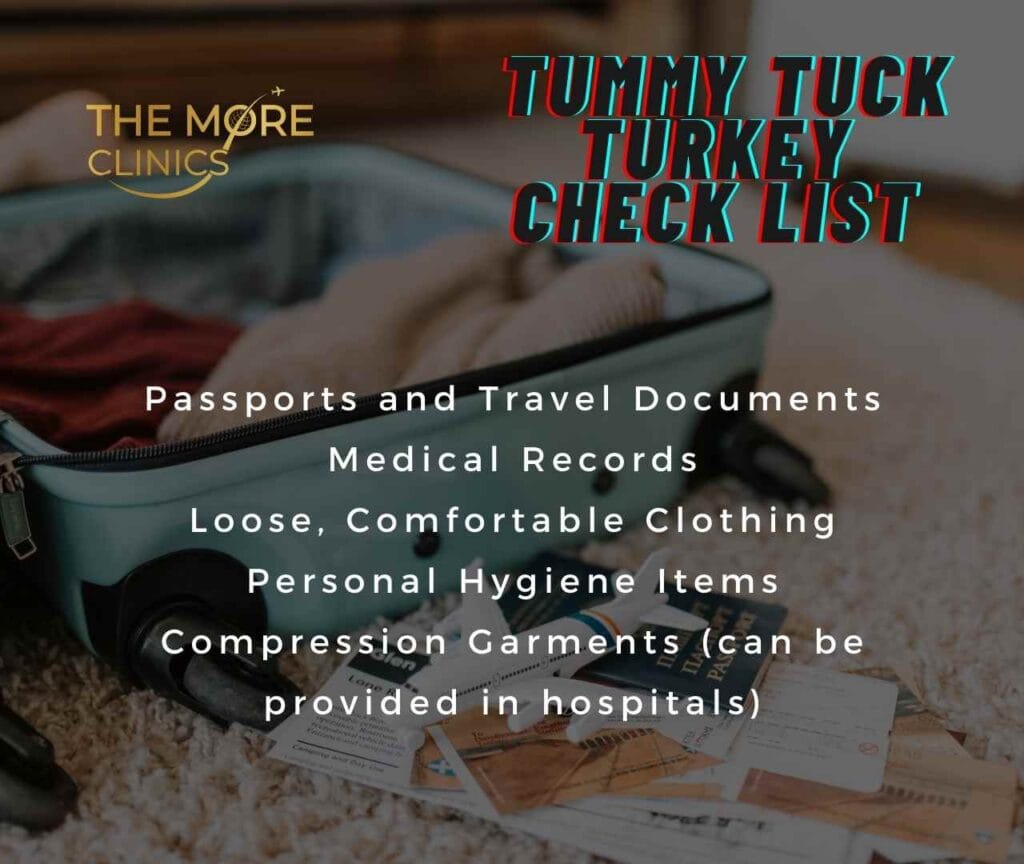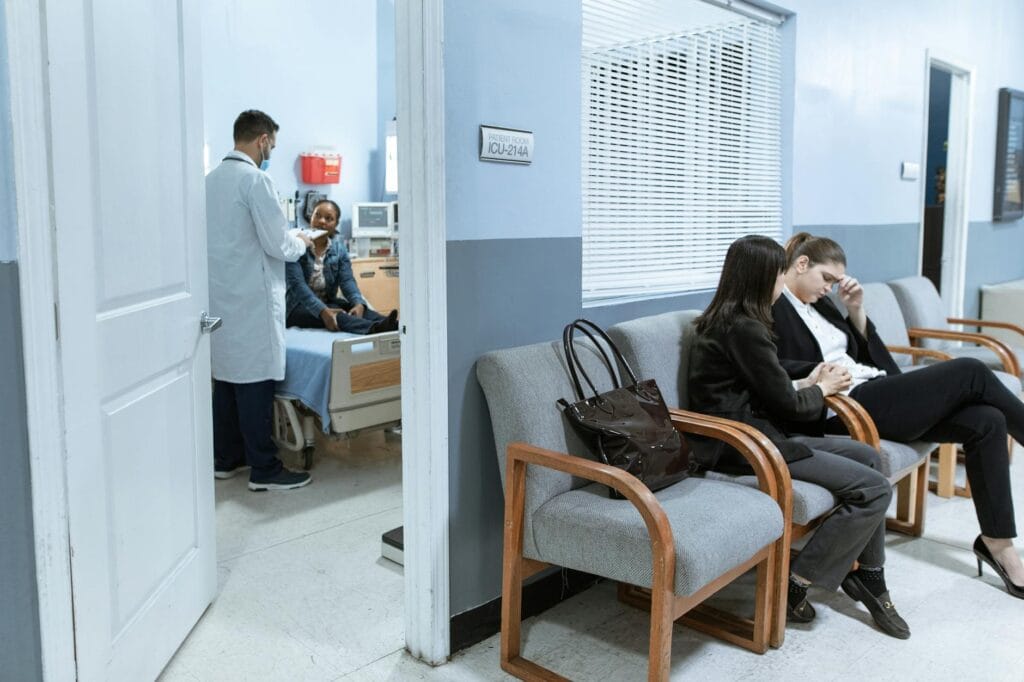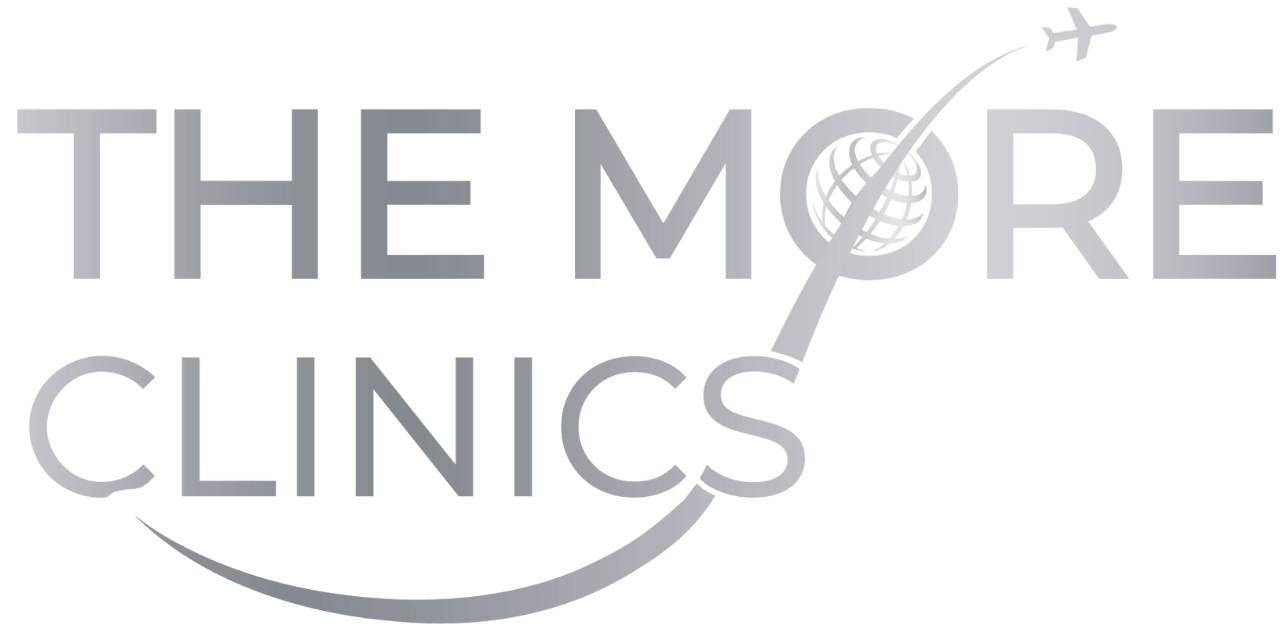How to Prepare for Tummy Tuck Surgery Checklist
Preparing for a tummy tuck is more than just scheduling the procedure—it’s about setting yourself up for the best results and recovery experience. A detailed tummy tuck checklist can make all the difference, ensuring your body is ready and reducing potential risks. Whether it’s adjusting your lifestyle, managing medications, or planning for recovery, taking the right steps beforehand is crucial. Learn how to optimise your preparation and discover why this process is just as important as the surgery itself. For more on recovery insights, check out the tummy tuck recovery timeline.

Understanding the Tummy Tuck Procedure
Preparing for a tummy tuck starts with understanding what the procedure involves and if it’s the right fit for you. From defining the surgery to identifying ideal candidates, let’s break it down.
What is a Tummy Tuck?
A tummy tuck, medically known as abdominoplasty, is a cosmetic surgery that removes excess skin and fat from the abdomen. It’s designed to tighten weakened or separated abdominal muscles, resulting in a smoother, firmer, and more toned appearance. Sometimes it may be combined with the surgeries called as mommy makeover surgery.
There are two primary types of tummy tucks:
- Full Tummy Tuck: This procedure addresses the entire abdominal area, removing sagging skin and tightening both upper and lower abdominal muscles. It’s suitable for those dealing with significant excess skin or muscle separation.
- Mini Tummy Tuck: This is a less invasive option focusing solely on the lower abdomen below the navel. It’s ideal for subtler corrections, involving a smaller incision and quicker recovery.
Choosing between a full or mini tummy tuck often depends on your specific needs and cosmetic goals. Learn more about the mini tummy tuck procedure and its benefits.

Who is a Candidate for a Tummy Tuck?
Not everyone is an immediate candidate for a tummy tuck. This procedure is often best suited for individuals who:
- Have experienced significant weight loss: Excess skin after major weight loss can affect confidence and comfort.
- Are recovering from pregnancy: Many women opt for this procedure to address stretched skin, weakened muscles, and abdominal changes from pregnancy.
- Struggle with sagging skin due to ageing: As skin loses elasticity, a tummy tuck can help restore firmness.
However, it’s important to note that a tummy tuck isn’t a substitute for weight loss or exercise. Ideal candidates should be in generally good health, within their target weight range, and have realistic expectations. For a complete cost breakdown and candidacy information, check out this guide to tummy tuck costs.
If you feel unsure, a consultation with a qualified practitioner can help you decide if this procedure aligns with your goals.
Preparing Your Body for Surgery
Preparing your body for surgery isn’t just a practical step—it’s an investment in a smoother recovery and better results. From what you eat to how you exercise, small but meaningful adjustments can help your body handle the stress of surgery and bounce back more effectively. Here’s what you need to know.
Dietary Adjustments
A healthy diet is one of the most powerful tools in your pre-surgery checklist. Proper nutrition helps your body heal faster and reduces potential complications. Focus on these dietary shifts:
- Eat more protein: Protein is essential for tissue repair and muscle strength. Include high-quality sources like chicken, fish, eggs, legumes, and nuts in your meals.
- Avoid certain foods and drinks: Cut back on sugar, fast food, and processed snacks. Also, stop consuming alcohol for at least two weeks before your surgery, as it can interfere with your body’s natural healing processes.
- Stay hydrated: Drinking plenty of water keeps your body functioning optimally. Dehydration can lead to complications, so make water your go-to drink.
- Don’t crash diet: Extreme dieting can weaken your immune system, leaving you vulnerable during and after the procedure. The goal is to keep your energy levels up and your body strong.
Physical Preparation
Physical activity—even moderate—can significantly enhance your recovery post-surgery. By strengthening your body beforehand, you’re giving it the tools to adapt and heal.
- Strengthen core muscles: Exercising your core with simple moves like planks or bridges can improve muscle tone, giving your abdomen more support post-surgery.
- Boost circulation: Activities like walking or low-intensity yoga enhance blood flow and reduce the risk of blood clots after surgery. Aim for 20-30 minutes a day, but avoid anything too strenuous.
Not an exercise regular? Don’t worry. The goal isn’t to become a fitness expert overnight but to improve blood flow and keep your muscles engaged.
Medical Preparations
Your doctor will provide specific instructions, but here are some common medical preparation tips to keep in mind:
- Stop smoking: Nicotine hinders blood flow and delays healing. Quit as early as possible—ideally at least four weeks before surgery.
- Manage medications: Certain medications, like blood thinners or herbal supplements, can increase bleeding risks. Discuss all prescriptions and over-the-counter drugs with your surgeon well in advance.
- Complete required tests: Whether it’s lab work, a physical exam, or imaging tests, this step ensures you’re medically ready. For more detailed information about pre-surgery preparation, visit the Plastic Surgery Overview.
Following these steps can make a noticeable difference in your surgery and recovery experience. Take time to prepare—you’re setting the foundation for a safer procedure and better results.
Organising Your Tummy Tuck Checklist
Planning for your tummy tuck surgery goes beyond the operating room; it’s about creating a strategy that ensures you’re physically, mentally, and practically prepared for both the procedure and recovery. Two essential aspects to focus on are what to take along to the hospital and how to prepare your recovery area at home for maximum comfort. Let’s break it down.
What to Bring to the Hospital
Packing the right items for your hospital stay helps make the experience less stressful and ensures you’re fully equipped for immediate post-surgery needs. Here’s a handy list of essentials to include in your bag:
- Comfortable clothing: Opt for loose-fitting, easy-to-wear clothes that are soft and gentle on your skin, such as pyjamas, a robe, or button-up shirts. Avoid tight waistbands or restrictive clothing.
- Essential toiletries: Pack travel-sized toiletries, including toothpaste, a toothbrush, deodorant, and a gentle face cleanser to freshen up easily after the procedure.
- Medical documentation: Keep a folder with your ID, insurance information, and surgeon’s instructions for easy access to important paperwork.
- Medicinal essentials: Bring any prescribed medication or supplements that have been approved by your surgeon.
- Small comforts: Items like lip balm, snacks for your companion, or a book can make waiting or overnight stays more bearable.
- Slip-on shoes: Avoid bending down by packing shoes you can just slide into without much effort.
Thinking ahead by packing a well-thought-out hospital bag puts you in control and lets you focus solely on the surgery.

Preparing Your Tummy Tuck Recovery Space
Setting up your home tummy tuck recovery area can be the difference between a smooth healing process and unnecessary discomfort. It’s all about convenience; think of setting the stage for self-care and rest. Here’s how you can create the perfect post-op setup:
- Pillows and positioning: Arrange extra pillows in your bed or on a recliner to keep your upper body elevated. This support prevents strain on your abdomen and aids in reducing swelling.
- Create a “daily essentials” zone: Use a small table or basket to keep all your go-to items within arm’s reach, such as water bottles, tissues, your phone charger, medication, and remote controls.
- Prepare your meals: Stock up on easy-to-reheat meals or prepare and freeze dishes ahead of time. This will reduce effort during your recovery and ensure you get nutritious foods.
- Bathroom accessibility: Consider adding a shower chair or non-slip mats to your bathroom for safety, and stock up on items like flushable wipes for easier hygiene maintenance.
- Clothing arrangements: Place comfy, loose-fitting clothes in easy-to-reach areas so you don’t have to stretch or strain to access your wardrobe.
A well-prepared recovery zone makes healing less of a hurdle and gives you the freedom to focus entirely on giving your body the rest it needs.
By focusing on these two key areas, you’re setting yourself up for a smoother tummy tuck experience. Thoughtful preparation gets you a step closer to your goal of a successful, stress-free healing process.
Travel Tips for International Patients
Travelling internationally for a tummy tuck surgery can feel daunting, but with the right preparation, it’s entirely manageable. From choosing the best clinic abroad to organising your travel essentials, every detail matters. Let’s break it down into actionable tips to help you navigate your tummy tuck journey.
Choosing a Hospital or Clinic Abroad
One of the most important decisions for international patients is selecting a reputable clinic and surgeon. When researching options, consider factors such as accreditation, patient reviews, and the surgeon’s qualifications. Always verify the clinic’s certifications and the surgeon’s board status. Online testimonials and before-and-after photos can also provide deeper insights into patient satisfaction.

Another vital step? Comparing costs without compromising quality. If you’re considering options in Turkey, for instance, it’s essential to weigh pricing with the level of care provided. For a detailed breakdown, refer to the tummy tuck cost guide, which provides insight into pricing structures and what’s generally included in the packages.
What to Pack for Your Tummy Tuck Journey
Packing strategically will set you up for a smoother experience abroad. Here are some essentials to include for a fuss-free trip:
- Passports and Travel Documents: Keep these in a secure, easily accessible bag, along with your travel itinerary and booking confirmations.
- Medical Records: Bring copies of your pre-surgery test results and any documents required by your surgeon.
- Compression Garments: These play a crucial role in your recovery, so pack the ones recommended for your post-op needs.
- Loose, Comfortable Clothing: Opt for button-up or zip-front tops, which are easier to manage after surgery.
- Personal Hygiene Items: Travel-sized toiletries, moist wipes, and dry shampoo are helpful for maintaining hygiene comfortably.
- Entertainment and Comfort: Bring a neck pillow, noise-cancelling headphones, and a good book or tablet to keep yourself relaxed during the journey.
Packing carefully ensures that you’ll have everything you need, whether you’re at the clinic or recovering back at your accommodation.
Post-Surgery Travel Considerations
Recovery and travel don’t always go hand-in-hand, but a little planning can make it manageable. If you’re taking a flight after surgery, keep these tips in mind:
- Wear Comfortable Clothing: Opt for loose-fitting outfits that won’t irritate your incisions.
- Stay Hydrated: Drink plenty of water to help reduce swelling during the flight.
- Walk During Layovers: If possible, walk around periodically to improve circulation and reduce the risk of blood clots.
- Invest in Travel Insurance: Ensure your policy covers medical tourism and includes post-surgery care, just in case you experience complications abroad.
These small adjustments can make your journey much more comfortable and stress-free while prioritising your recovery.
Understanding Post-Surgery Expectations
Knowing what lies ahead after a tummy tuck is just as important as preparing for the surgery itself. Understanding post-surgery expectations ensures you’re mentally ready, follow recovery guidelines effectively, and can address any concerns promptly. Let’s explore key recovery milestones, managing pain, and when to seek medical attention.
The Recovery Timeline
The tummy tuck recovery process is structured around gradual milestones that your body experiences over weeks and months. Here’s a brief breakdown:
- Week 1-2: Expect some swelling, bruising, and discomfort. This is when you’ll likely need the most rest. Wearing compression garments helps reduce swelling and supports the healing process.
- Week 3-4: Moderate activity may gradually resume, but heavy lifting and intense workouts should still be avoided.
- Week 6 onward: Most people feel ready to return to everyday activities. Your surgeon may clear you for more physical activities based on your healing progress.
Each individual’s journey is unique, so it’s important to listen to your body and adhere to your surgeon’s advice. For a more detailed overview, visit the tummy tuck recovery timeline.
Managing Pain and Discomfort
Pain management is a crucial part of the healing process. While discomfort is normal after surgery, effective management can make the recovery smoother and less stressful. Here’s what you need to know:
- Stay on top of your medication: Follow prescribed pain relief schedules closely, as skipping doses can lead to unnecessary discomfort or prolonged recovery.
- Apply cold compresses (if allowed): These can help minimise swelling and provide short-term relief from pain.
- Rest strategically: Be mindful of your posture to avoid putting strain on your abdomen. Using pillows to elevate your body can relieve pressure and improve comfort.
Remember, don’t hesitate to communicate with your healthcare provider if your pain feels unmanageable or falls outside of what was explained during consultations.
When to Contact Your Surgeon
Post-operative concerns can arise, and knowing when to act is essential. Monitor your recovery and be alert to red flags that may indicate complications. You should contact your surgeon if you experience:
- Severe swelling: While some swelling is expected, excessive or sudden swelling could indicate an issue like infection or fluid accumulation.
- Unusual pain or redness: Pain that worsens over time or redness spreading near the incision site deserves immediate attention.
- Fever or chills: These symptoms might suggest an infection and require prompt intervention.
- Prolonged numbness or discharge: Incision areas that don’t heal or produce abnormal fluids may need evaluation.
Your surgeon is your best resource for addressing these concerns and ensuring your recovery stays on track. Always prioritise your well-being by reaching out if something feels off.
Last Word from the More Clinics Turkey
Taking the time to follow a thorough checklist is an essential step in achieving a safe surgery and optimal tummy tuck recovery. Small adjustments to your diet, fitness, and daily routine can make a significant difference, and setting up a recovery-friendly environment ensures a smoother post-operative experience.
Consulting with your surgeon and tailoring these tips to your unique needs is the best way to get personalised advice. For an even deeper look at the recovery process and what to expect, visit the tummy tuck surgery guide. Being well-prepared empowers you to focus on healing and enjoying the results of your tummy tuck with peace of mind. If you have any questions please get in touch with us now!

Written by The More Editorial Team and Medically Reviewed by Dr. Gökhan Bacak who specialized on Medicine and Plastic Surgery
GET A FREE CONSULTATION!
Let’s Start Planning Your Treatment %100 Guarantee Results.





